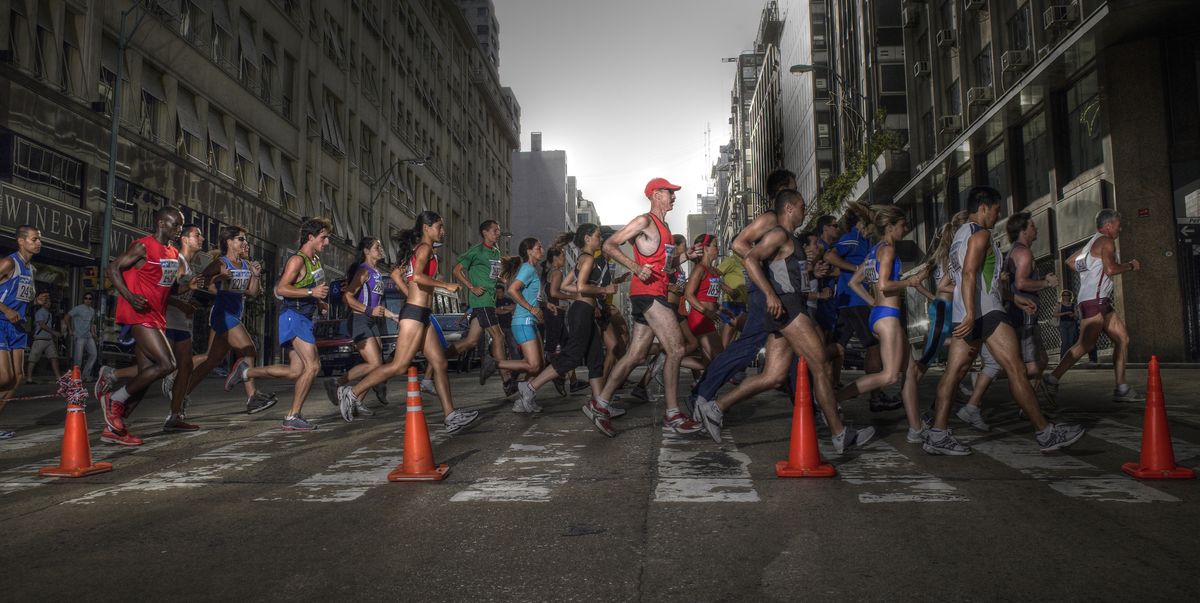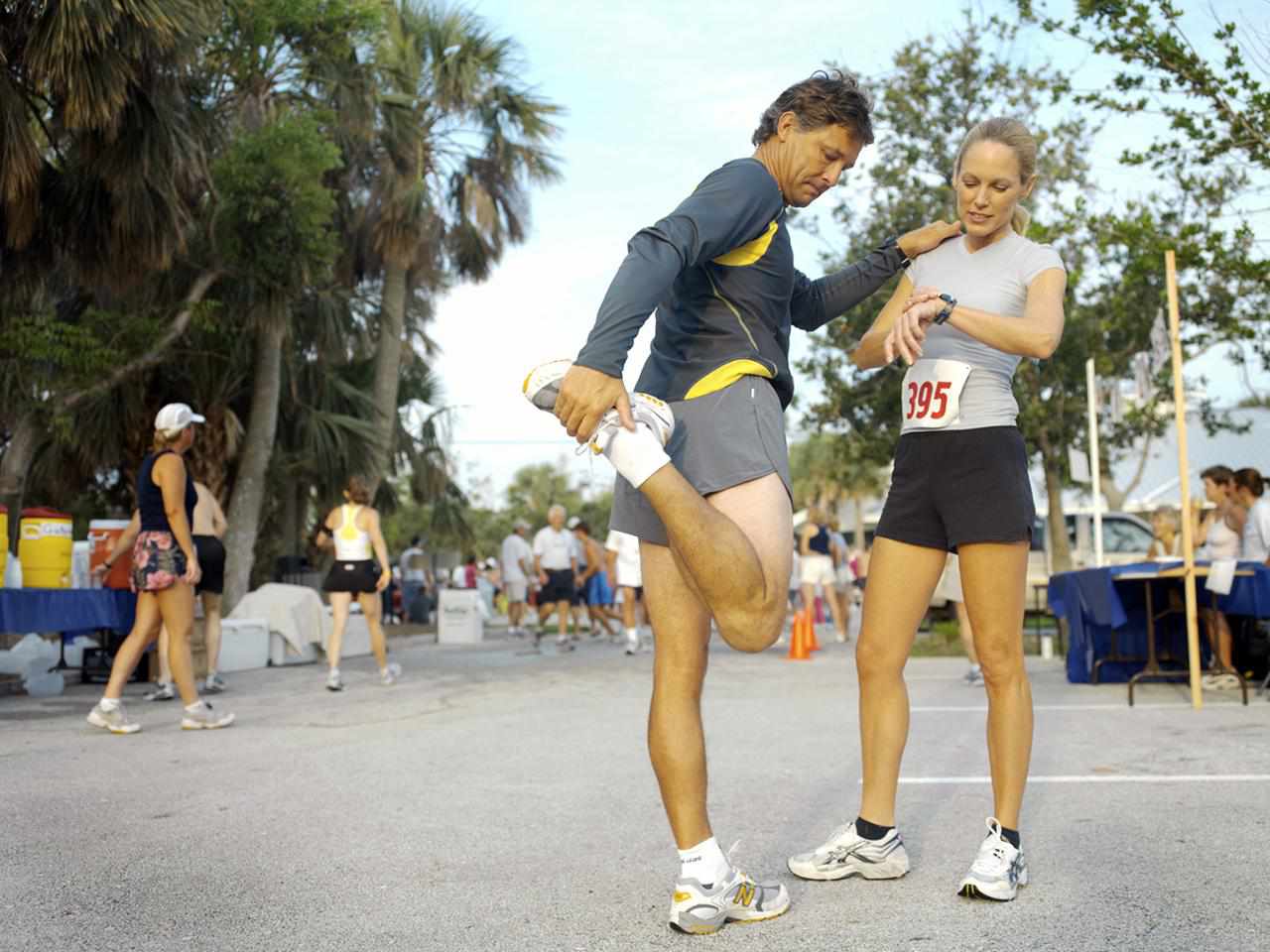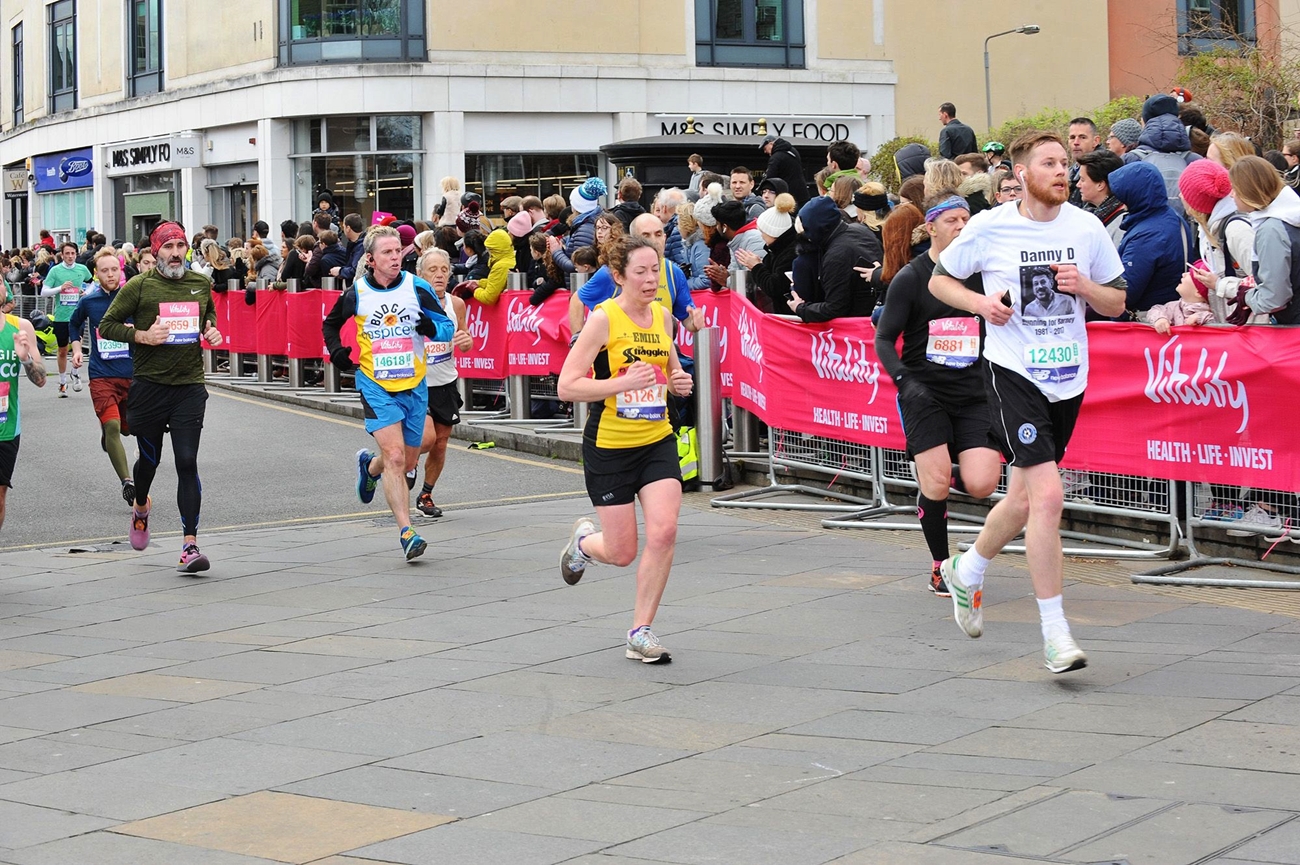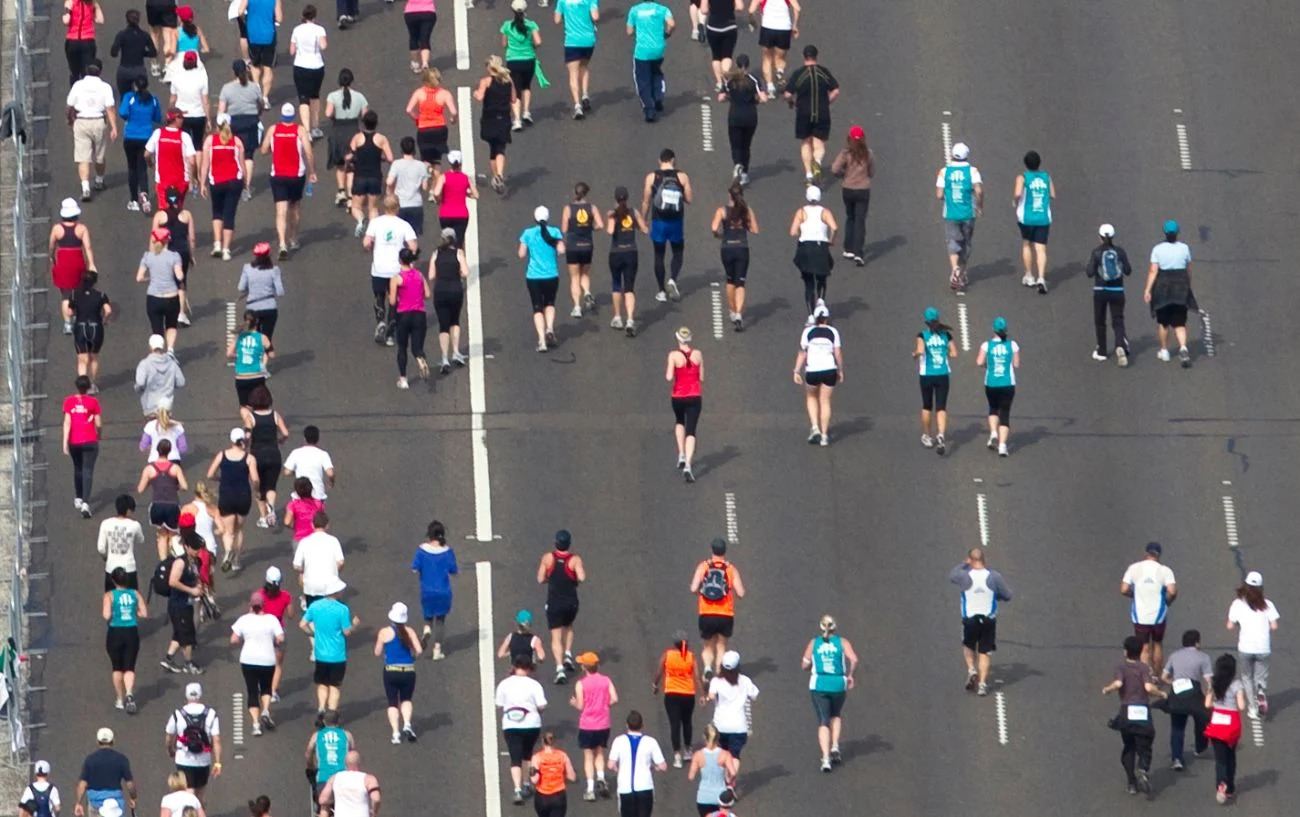

Featured
How Many Miles In A 1/2 Marathon
Modified: January 2, 2024
Discover how many miles are in a half marathon in this featured article. Uncover the distance and prepare yourself for the challenge.
Introduction
Welcome to the world of half marathons – a popular and challenging distance for runners of all levels. Whether you’re a seasoned athlete looking for a new challenge or a beginner setting out on your fitness journey, the half marathon is an exciting and attainable goal. In this article, we will explore the ins and outs of the half marathon, including its definition, distance, conversion factors, and training tips.
A half marathon is a long-distance running race that covers 13.1 miles or approximately 21.0975 kilometers. It sits right in the middle between a 10K race (6.2 miles) and a full marathon (26.2 miles). As a result, it requires a combination of speed, endurance, and mental strength.
For those who are new to the world of running, or perhaps unfamiliar with the metric system, the concept of completing 13.1 miles might sound daunting. However, with proper training, dedication, and the right mindset, anyone can cross that finish line.
When it comes to converting miles to kilometers, or vice versa, there are a few conversion factors to keep in mind. To convert miles to kilometers, simply multiply the number of miles by 1.60934. So, for a half marathon, which is 13.1 miles, the equivalent in kilometers would be 21.0975 (13.1 x 1.60934).
On the flip side, if you’re more accustomed to working with kilometers and need to convert to miles, divide the number of kilometers by 1.60934. For example, a 21-kilometer race would be approximately 13.0488 miles (21 / 1.60934).
Training for a half marathon requires a thoughtful and structured approach. It’s important to gradually build up your endurance, improve your cardiovascular fitness, and strengthen your muscles to tackle the distance. Creating a training plan that includes a mix of running, cross-training, and rest days is essential for success.
In the following sections of this article, we will delve deeper into the distance of a half marathon, provide more details on the conversion factors, and share valuable training tips to help you prepare for this exciting race.
Definition of a Half Marathon
A half marathon is a popular distance in the running world that has gained immense popularity over the years. It is a long-distance road race that covers half the distance of a full marathon, hence the name “half marathon.” This race is a perfect balance between the challenge of a marathon and the speed of a shorter race, making it appealing to a wide range of runners.
To be more specific, a half marathon is 13.1 miles long, equivalent to approximately 21.0975 kilometers. It is seen as a significant milestone for many runners and is often used as a stepping stone towards eventually completing a full marathon. The race usually takes place on a well-marked course, typically on roads or a combination of roads and trails, in various locations around the world.
The half marathon distance offers a unique blend of endurance and speed. Runners need the stamina to endure the prolonged effort, but also the speed to maintain a strong pace throughout the race. It requires a balance of physical fitness, mental toughness, and strategic race-day tactics to achieve the desired result.
One of the reasons that make the half marathon so appealing is its accessibility. Unlike a full marathon, training for a half marathon typically requires less time commitment and puts less strain on the body. It is a challenging distance that pushes runners to their limits, but without the daunting demands of an exhaustive training regimen or extended recovery period.
Additionally, the half marathon attracts a diverse range of participants. From seasoned runners aiming to set a personal best to beginners looking for their first significant running achievement, the half marathon caters to individuals of all abilities. It is a race that encourages inclusivity and provides an opportunity for people from all walks of life to challenge themselves and accomplish something remarkable.
It’s worth noting that the popularity of half marathons has surged in recent years, with thousands of races taking place worldwide. These races often attract large crowds of supporters who line the streets to cheer on the participants, creating a vibrant and energetic atmosphere.
Now that we have a clear understanding of what a half marathon is, in the next section, we will explore the exact distance of this challenging race and provide an overview of the conversion factors between miles and kilometers.
Distance of a Half Marathon
The distance of a half marathon is an essential aspect to understand when embarking on the journey to participate in this race. A half marathon is precisely 13.1 miles or approximately 21.0975 kilometers long. This distance may vary slightly depending on the specific racecourse, but it is generally standardized across most official half marathon events.
The 13.1-mile distance of a half marathon represents a significant challenge for runners of all levels. It requires a combination of endurance, strength, and mental fortitude to complete the race. With proper training and preparation, however, this distance is achievable for anyone willing to put in the effort.
When compared to shorter races like the 5K or 10K, the half marathon pushes runners to go beyond their comfort zones. It provides a unique opportunity to test one’s endurance and stamina, pushing the boundaries of physical and mental capabilities. The race duration for an average runner can range from around 1 hour and 45 minutes to 2 hours and 30 minutes.
Running a half marathon is often seen as a significant milestone in a runner’s journey. It serves as a stepping stone towards more ambitious goals, such as completing a full marathon or achieving a personal best. For many, the half marathon is the perfect balance of distance and challenge, allowing them to push themselves without overwhelming their bodies.
It’s important to note that the distance of a half marathon is not just a random number. It has historical significance dating back to the early 20th century in England. During that time, road races covered varying distances, and a half marathon, precisely 13.1 miles, was established as an official distance in the early 1900s. Since then, it has become a widely recognized distance and a popular racing category.
Whether you’re aiming to complete your first half marathon or looking to improve your race time, understanding the distance is crucial. Being aware of the mileage and training specifically for the demands it poses will help you plan your training program effectively and gauge your progress along the way.
In the next section, we will explore the conversion factors between miles and kilometers, which are vital for understanding the distance of a half marathon for runners who are more familiar with one unit of measurement over the other.
Conversion Factors for Half Marathon
When it comes to understanding the distance of a half marathon, it’s important to be familiar with the conversion factors between miles and kilometers. This knowledge can be particularly helpful for runners who are more comfortable with one unit of measurement over the other.
In the United States and a few other countries, miles are the primary unit of measuring distance. However, in most parts of the world, kilometers are the standard unit. Fortunately, converting between the two is a straightforward process.
To convert miles to kilometers, simply multiply the number of miles by a conversion factor of 1.60934. For example, if you have a half marathon race that is 13.1 miles long, you can multiply 13.1 by 1.60934 to find that the equivalent distance in kilometers is approximately 21.0975.
On the other hand, if you are more familiar with kilometers and need to convert to miles, divide the number of kilometers by the same conversion factor of 1.60934. For instance, if you’re training for a race that is 21 kilometers long, dividing 21 by 1.60934 gives you a distance of approximately 13.0488 miles.
Having a basic understanding of these conversion factors can be beneficial, especially when planning your training or participating in races that predominantly use a different unit of measurement than what you are used to. It allows for seamless communication and ensures that you have a clear understanding of the distances you will be covering.
It’s worth noting that some race organizers may provide distances in both miles and kilometers to accommodate participants from different regions. However, being well-versed in the conversion factors allows you to confidently navigate the race information and make informed decisions regarding pacing and strategy.
Whether you think in terms of miles or kilometers, being able to convert between the two units is a valuable skill for any runner. It helps ensure accurate measurements, facilitates communication among runners from various parts of the world, and enhances your overall race experience.
Now that we have explored the conversion factors for a half marathon, in the next section, we will dive into the essential aspects of training to prepare for this challenging race.
Training for a Half Marathon
Training for a half marathon is a crucial component of preparing yourself physically and mentally for the challenges that lie ahead. It’s essential to approach your training with a thoughtful and structured plan that gradually builds your endurance, improves your cardiovascular fitness, and strengthens your muscles.
The duration of your training plan will depend on your current fitness level and running experience. Typically, a training plan for a half marathon ranges from 10 to 14 weeks, allowing adequate time for progress and increasing the mileage gradually.
Here are some key elements to consider when designing your training program:
- Build a Running Base: Start with a base-building phase, focusing on running consistently and gradually increasing your weekly mileage. This phase helps condition your muscles, joints, and cardiovascular system for the more demanding workouts to come.
- Long Runs: Incorporate weekly long runs into your training plan. These runs are designed to increase your endurance and simulate the race-day experience. Gradually increase the distance of your long runs over time, with a goal of reaching the full half marathon distance at least once before race day.
- Speed Workouts: To improve your race pace and overall speed, include speed workouts in your training routine. This can include interval training, tempo runs, and fartlek sessions. These workouts help build your anaerobic capacity and improve your running efficiency.
- Strength Training: Don’t neglect strength training exercises, as they play a crucial role in preventing injuries and improving overall performance. Focus on exercises that target your lower body, core, and hip muscles to enhance stability and power.
- Rest and Recovery: Rest days are just as important as your training days. Allow your body time to recover and repair by incorporating rest days into your training plan. Active recovery activities like stretching, yoga, or cross-training can also be beneficial.
- Nutrition and Hydration: Proper fueling and hydration are essential for optimal performance. Pay attention to your diet, making sure to consume a balanced mix of carbohydrates, proteins, and healthy fats. Stay hydrated throughout your training, both during workouts and throughout the day.
It’s important to listen to your body during training. If you experience pain or fatigue, don’t hesitate to take additional rest days or seek professional advice. Pushing through injuries can lead to more serious problems and hinder your progress.
Lastly, don’t underestimate the power of mental preparation. Visualize yourself crossing that finish line, visualize the feeling of accomplishment, and use positive affirmations to keep yourself motivated during challenging training runs and on race day.
By following a well-structured training plan, paying attention to your body’s needs, and staying mentally focused, you can prepare yourself to conquer the half marathon distance. Remember, each step you take in your training is a step closer to achieving your goal.
In the next section, we will wrap up our exploration of the half marathon, summarizing the key takeaways from this article.
Conclusion
Completing a half marathon is a remarkable achievement that requires dedication, perseverance, and proper training. Throughout this article, we have explored the definition of a half marathon, its distance of 13.1 miles or approximately 21.0975 kilometers, and the conversion factors between miles and kilometers.
We have also delved into the importance of training for a half marathon, emphasizing the need for a structured training plan that includes building a running base, incorporating long runs, speed workouts, strength training, rest and recovery, and proper nutrition and hydration.
Training for a half marathon is not just about physical preparation; it’s also about mental strength and resilience. Visualizing success, staying motivated, and maintaining a positive mindset are crucial elements throughout your training and on race day.
Remember, the half marathon is a distance that offers a perfect balance between challenge and accomplishment. It can serve as a stepping stone towards even greater running goals or be a significant achievement in itself.
As you embark on your half marathon journey, enjoy the process, celebrate your progress, and embrace the sense of achievement that comes with reaching the finish line. Whether it’s your first half marathon or one of many, each race is an opportunity for personal growth and pushing your boundaries.
So lace up your running shoes, map out your training plan, and commit to the challenge. The half marathon awaits with its inspiring atmosphere, the sense of camaraderie among fellow runners, and the incredible feeling of crossing the finish line knowing you’ve accomplished something truly remarkable.
Best of luck on your half marathon journey, and may each step bring you closer to achieving your goals!









